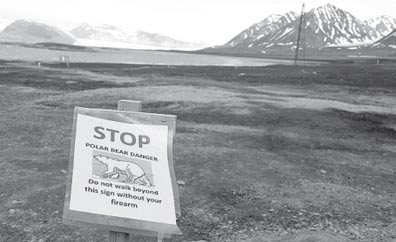 |
|
A warning sign at the entrance of the scientific base of Ny-Alesund in the Svalbard archipelago. [Photo/Agencies] |
Always take a gun
Encounters between humans and polar bears on Norway's stunning Svalbard archipelago, of which Spitsbergen is the largest island, are rare.
In March this year, one attacked a sleeping Czech tourist, causing injuries to his face and arm before fellow campers shot the animal dead.
Every new arrival at Ny-Alesund must learn to shoot if they wish to leave the base. The most important message: "Always be vigilant; bears could be anywhere and they are unpredictable," said Sebastien Barrault, the scientific advisor of a Norwegian company running logistics at the site.
"Agun is your passport for leaving the town," he said.
Svalbard is roughly one-and-a-half times the size of Switzerland, and home to some 3,000 polar bears-outnumbering the 2,500-odd human inhabitants.
There are some 2025,000 polar bears left on Earth, and the species is listed by the International Union for Conservation of Nature as "vulnerable"-meaning it faces a high risk of extinction in the wild.
Polar bears have been hunted to excess, and are at further risk from melting sea ice, their principal hunting ground, due to global warming.
Shooting a bear, said Barrault, must always be "the last resort"-used only to protect human life.
Adult male polar bears males can weigh anything from 350 to over 600 kilograms and run at speeds of up to 40 kilometers per hour over short distances.
|
|
|
|
|
|
|
|
